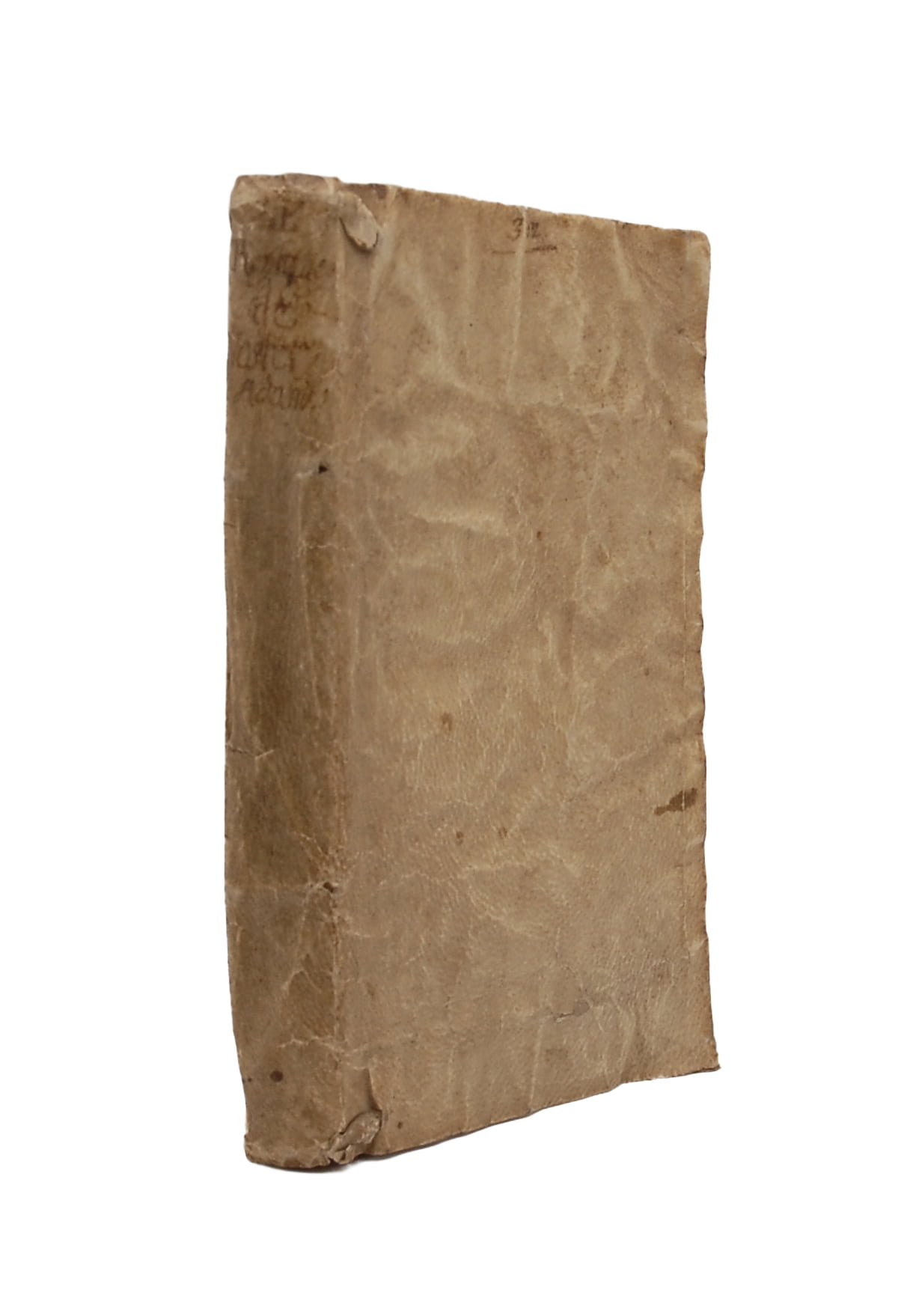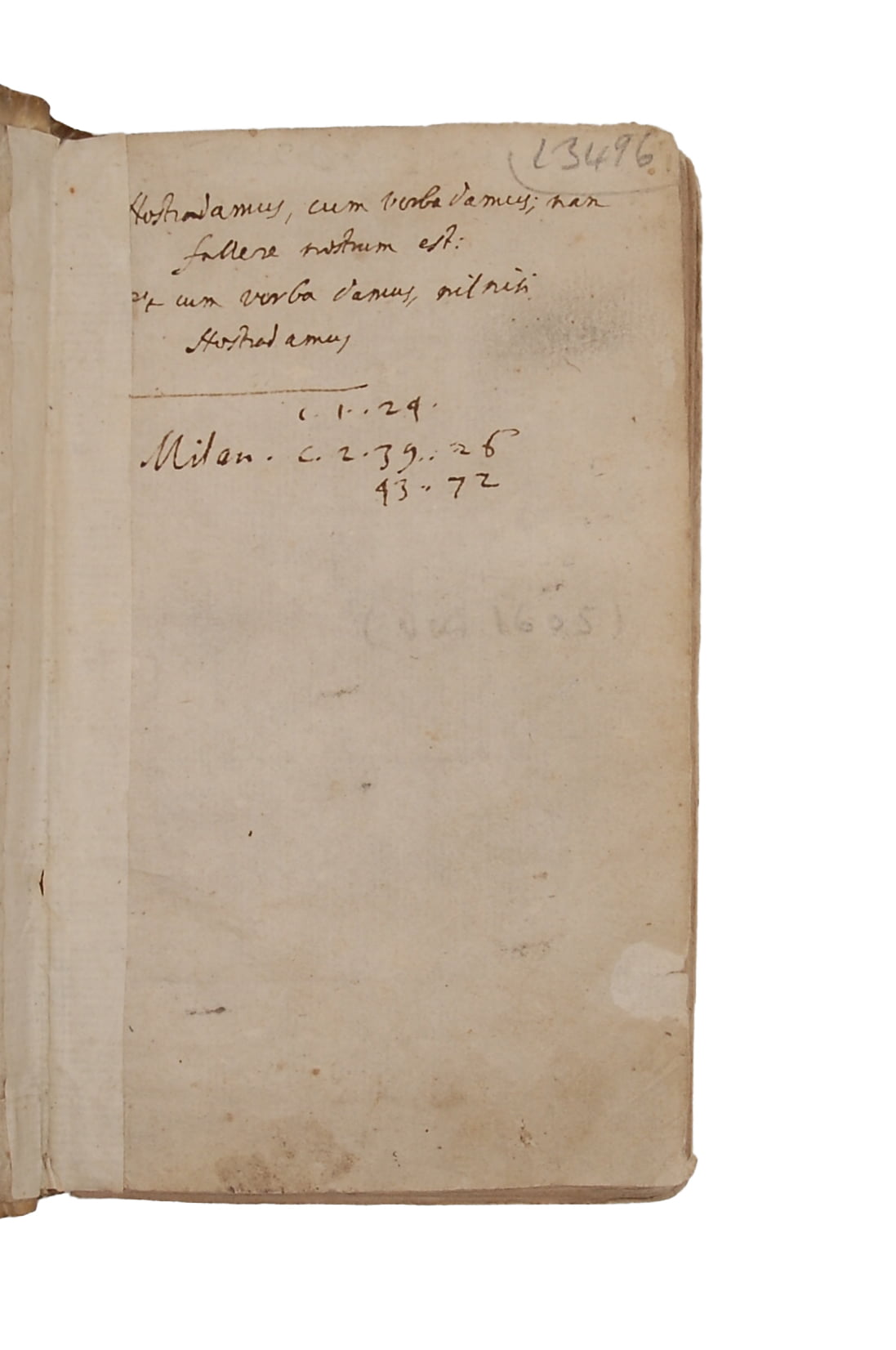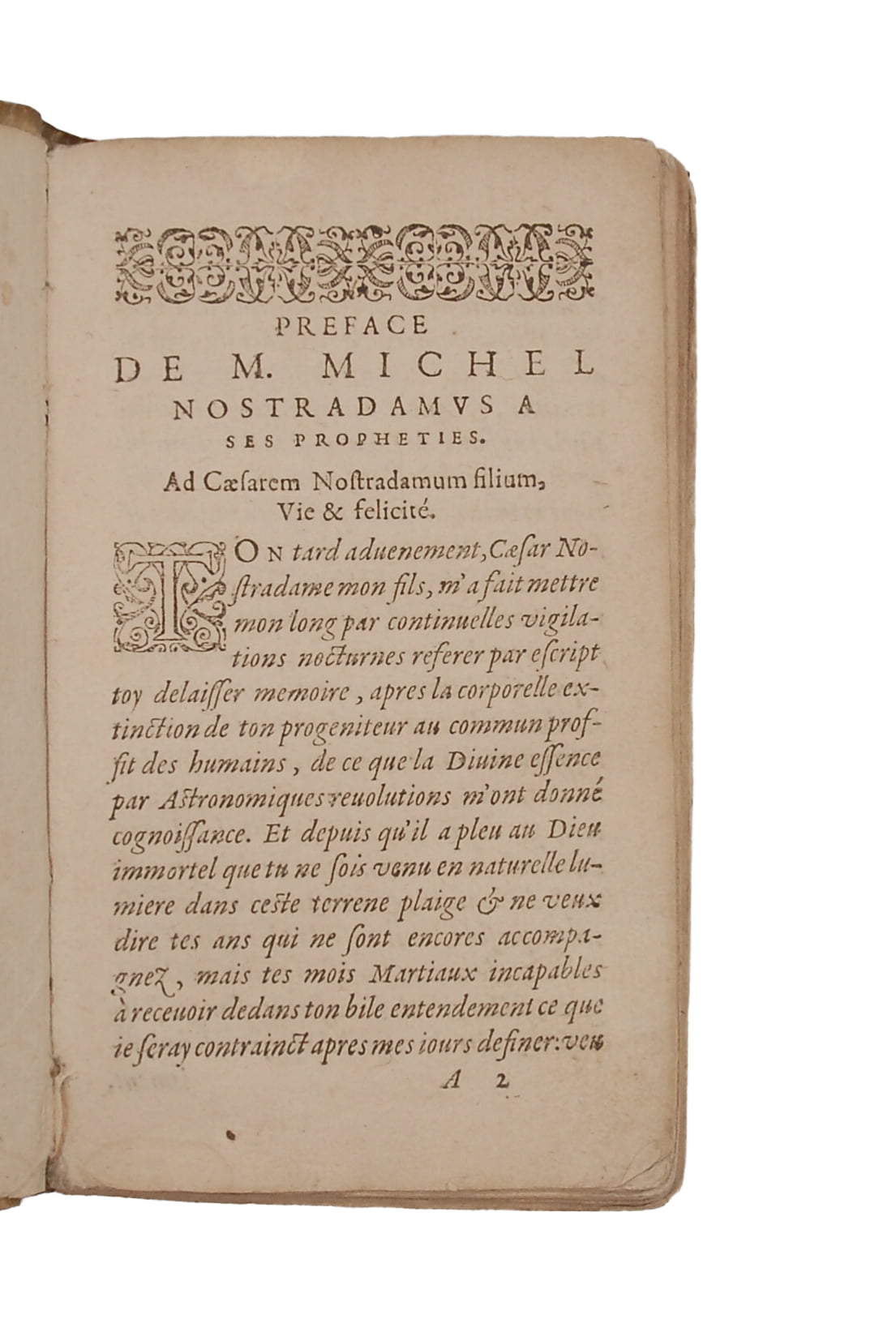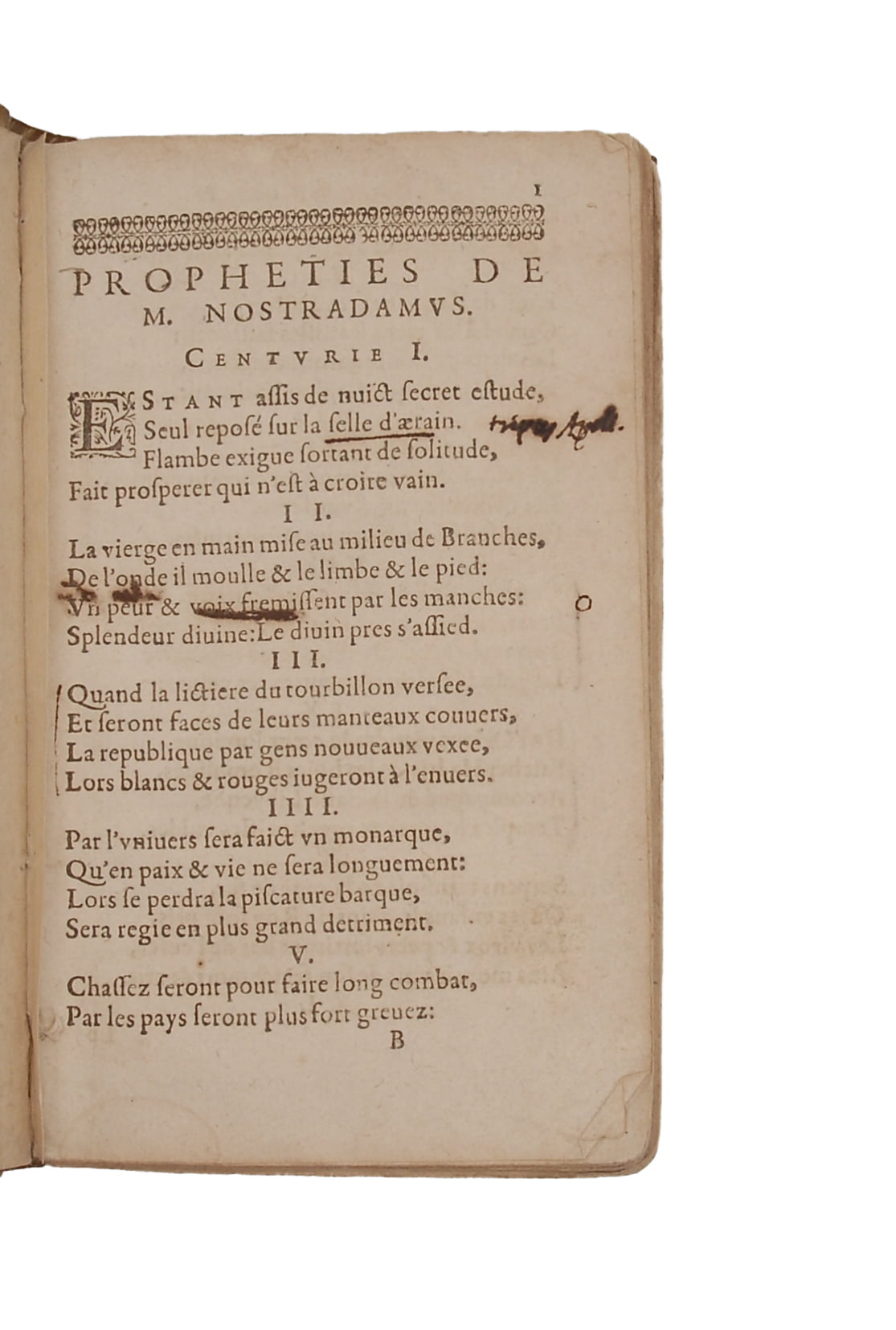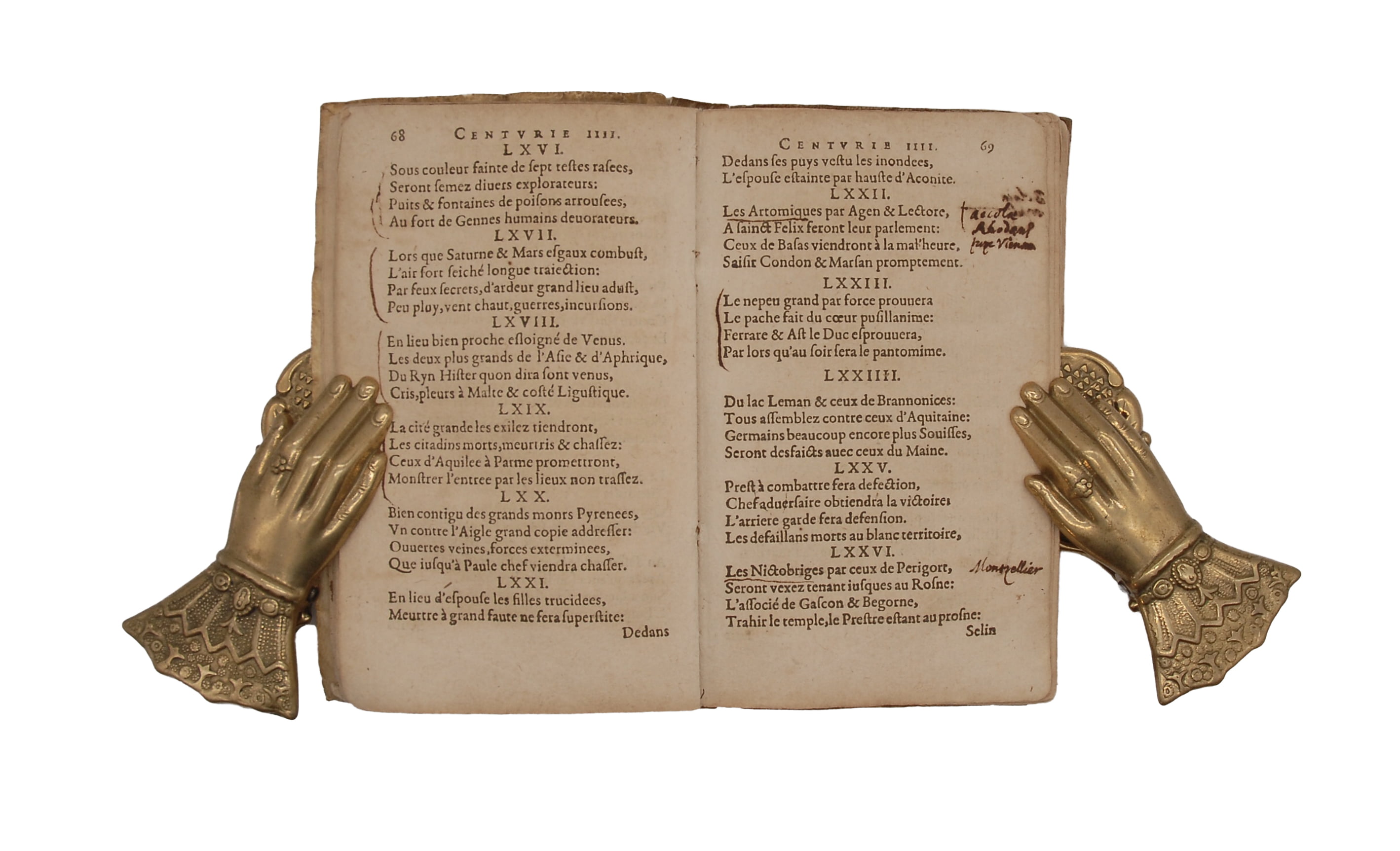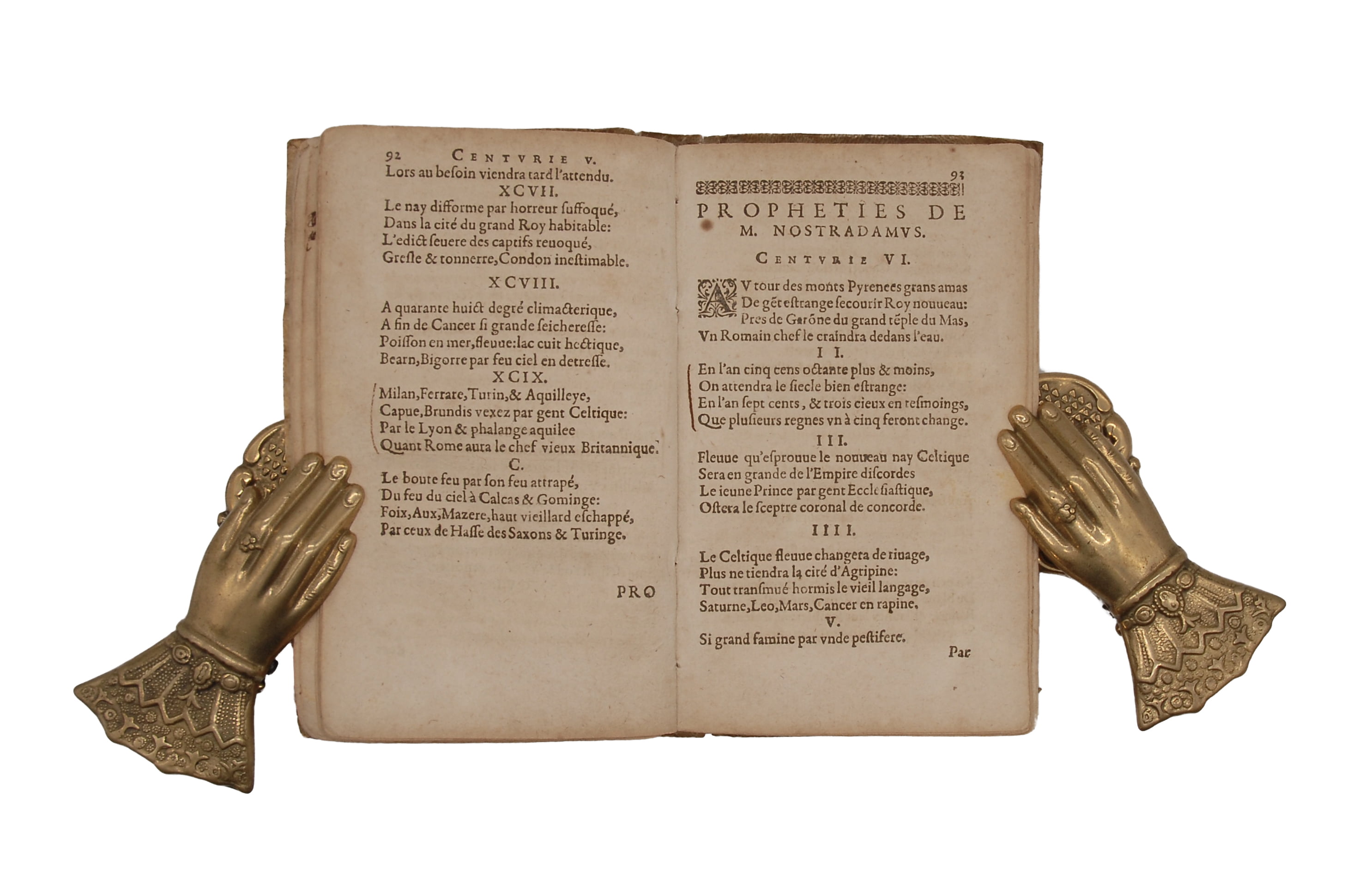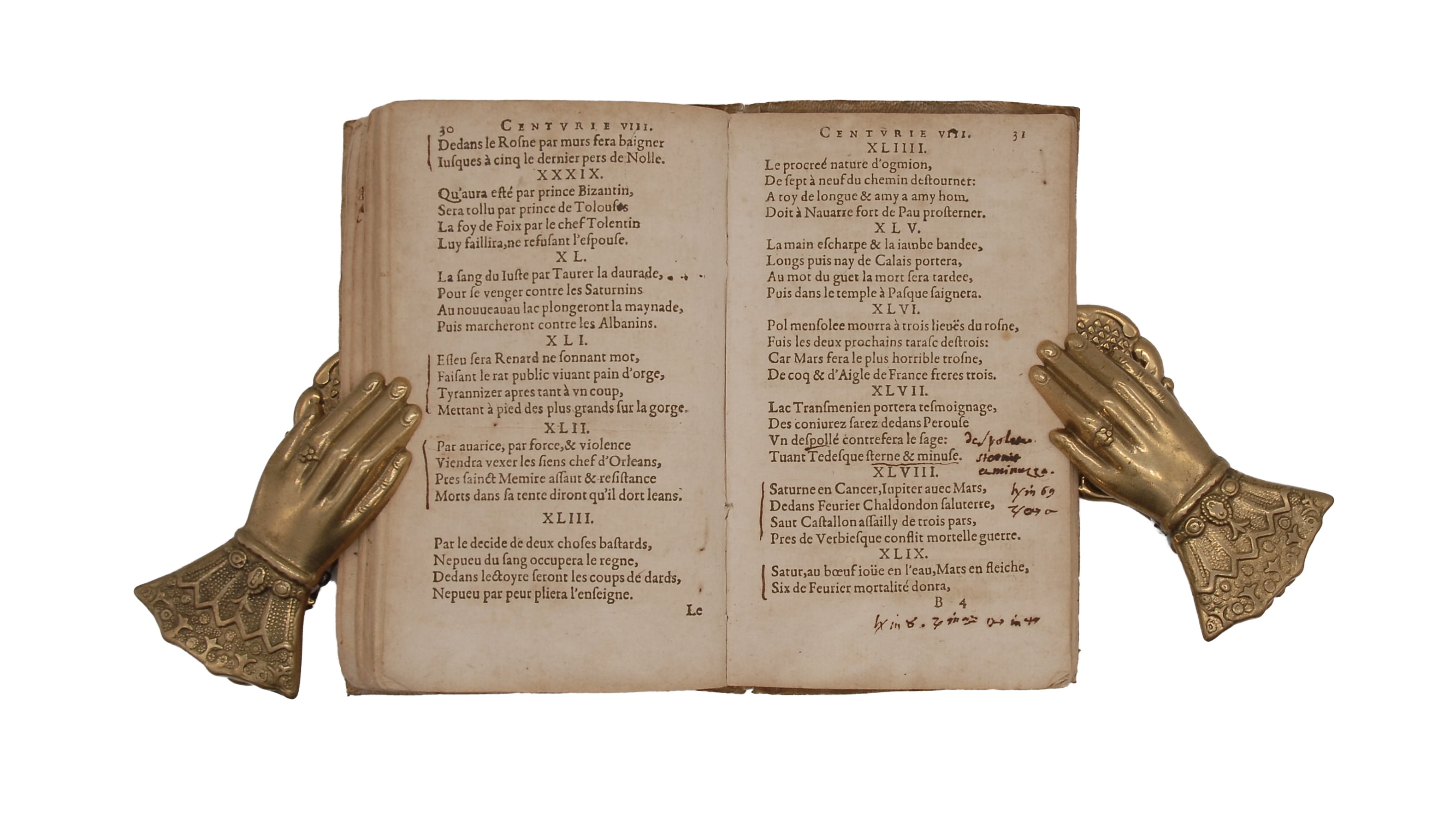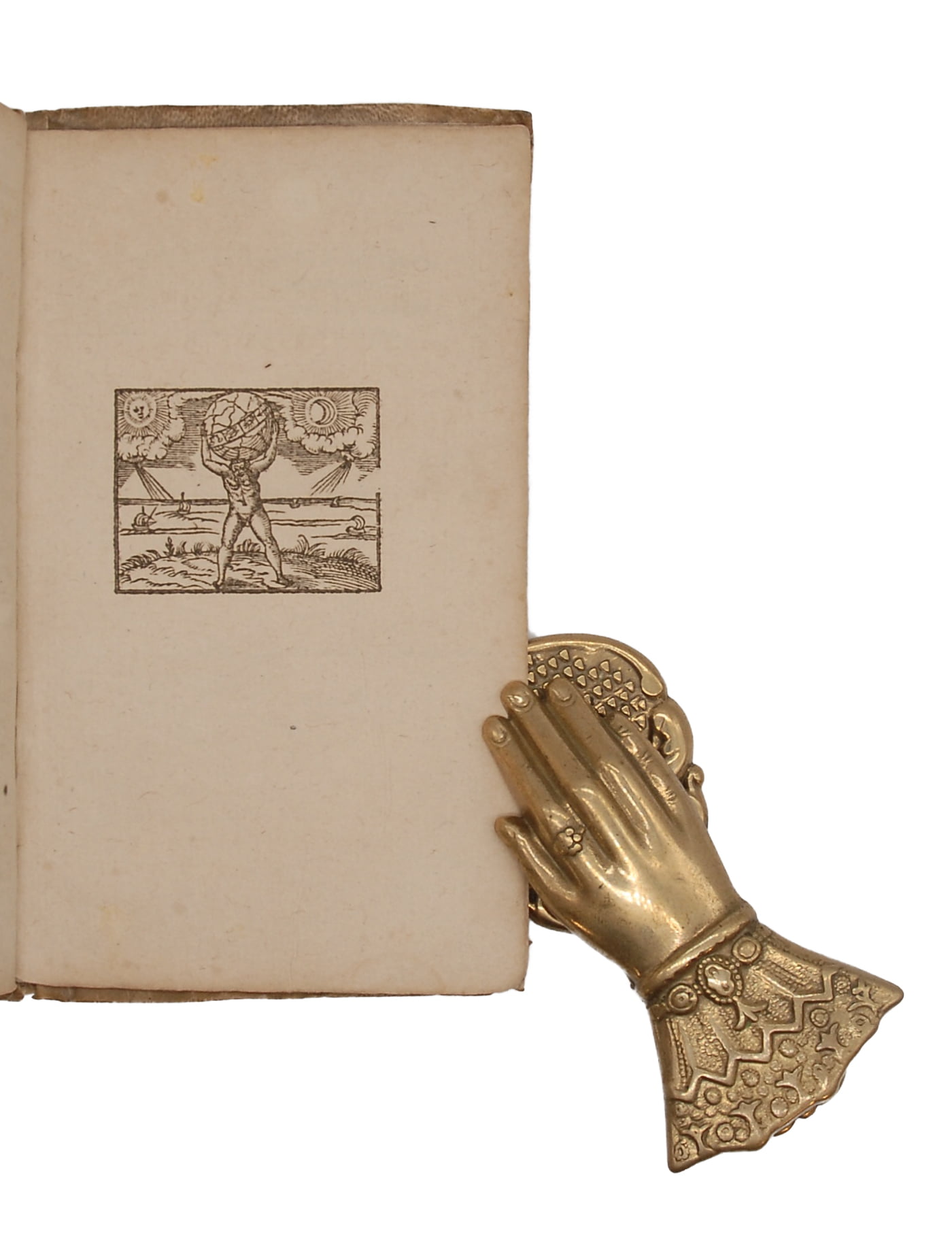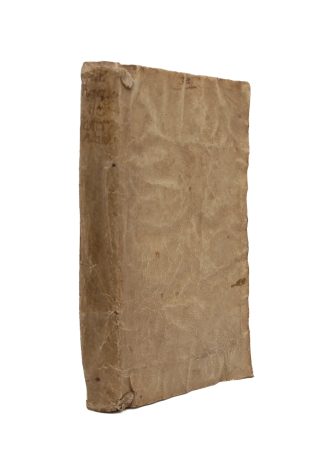NOSTRADAMUS, Michel.
APPARENTLY UNRECORDED
Les Propheties. Dont il y en a trois cens qui n᾽ont encores iamais esté imprimees.
Lyon, chez Pierre Rigaud, n.d. (circa 1650)£3,250.00
8vo. Three parts in one. pp. (xvi) 119 (i); 78 (ii). (v) 19. A8, B-F12: A-C12, D4; *12. Roman letter, charming woodcut on first title of an astronomer, another on last leaf of first part, woodcut of astrologer on second title and of Atlas on recto of final blank, small woodcut initial, typographical ornaments, early autograph “S Alecon” on title, interesting early annotations in Latin commenting on the edition on fly, in slightly later hand as side notes. A little smudging , light browning and occasional marginal spotting (poor quality paper). A very good copy in contemporary limp vellum, rear pastedown apparently renewed.
An extremely rare, popular edition of the prophecies of Nostradamus by Pierre Rigaud, a deliberate copy of the earliest editions, printed at Lyon by the same family, here without date (some later editions by Rigaud were printed with false earlier dates). We have not been able to locate another copy of this edition; it seems closest to Chomart 201 “Michel Chomarat and Jean-Paul Laroche. Bibliographie Nostradamus; XVIe, XVIIe, XVIIIe siècles. 1989”). The first part contains the authors famous dedication to his son and the second to Henry II. The work was originally published in three parts, the first containing 353 poems. A second part was printed in 1557 and added 289 further prophecies; the third and final part of 300 new poems was printed in 1558, posthumously, by Pierre Rigaud Sr. These poems or rhymed quatrains were grouped into nine sets of 100 and one of 42, called “Centuries”. In this edition there are 44 in the last section though an annotator has crossed out the final two additional centuries stating that they were not to be found in early editions. A final quire has been added containing 71 further centuries by Vincent Seve de Beaucaire, originally made in 1605 and often added.
Nostradamus claimed each prediction was based upon his astrological reading of particular events, though it is evident that a great deal of the work is copied from earlier Latin authors such as Livy, Plutarch, and other classical historians, and many are taken directly from Richard Roussat’s Livre de l’estat et mutations des temps (1549 1550). The Mirabilis Liber of 1522, which contained a wide range of prophecies by such authors as Pseudo-Methodius, the Tiburtine Sibyl, Joachim of Fiore, Savonarola and others was also a well used source. His considerable initial success was based on the fact that he was one of the first to re-paraphrase these prophecies in French. Further material was gleaned from the De honesta disciplina of 1504 by Petrus Crinitus, which included extracts from Michael Psellos’ De daemonibus, and the De Mysteriis Aegyptiorum, a book on Chaldean and Assyrian magic by Iamblichus, a fourth-century Neo-Platonist. Most of the quatrains deal with disasters, such as plagues, earthquakes, wars, floods, invasions, murders, droughts, and battles all undated and based on foreshadowings by the Mirabilis Liber. The work was remarkably and instantaneously popular. This later seventeenth century edition deliberately imitates the first editions, playing on the mystique these editions had already acquired. Modern interpretations of the quatrains have shown them to predict the French Revolution, Napoleon, Hitler, the nuclear destruction of Hiroshima and Nagasaki, and even the death of princess Diana and the events of 9/11. An important contemporary theme was fear of an impending invasion of Europe by Muslim forces, headed by the expected Antichrist, directly reflecting the Ottoman invasions of the Balkans. The work was published within the context of a general fear of an imminent apocalypse. A rare and charming popular edition.
Not in BM STC Fr. C17th, USTC, or Cantamessa. We have located no copy on Worldcat or in the BNF.In stock


